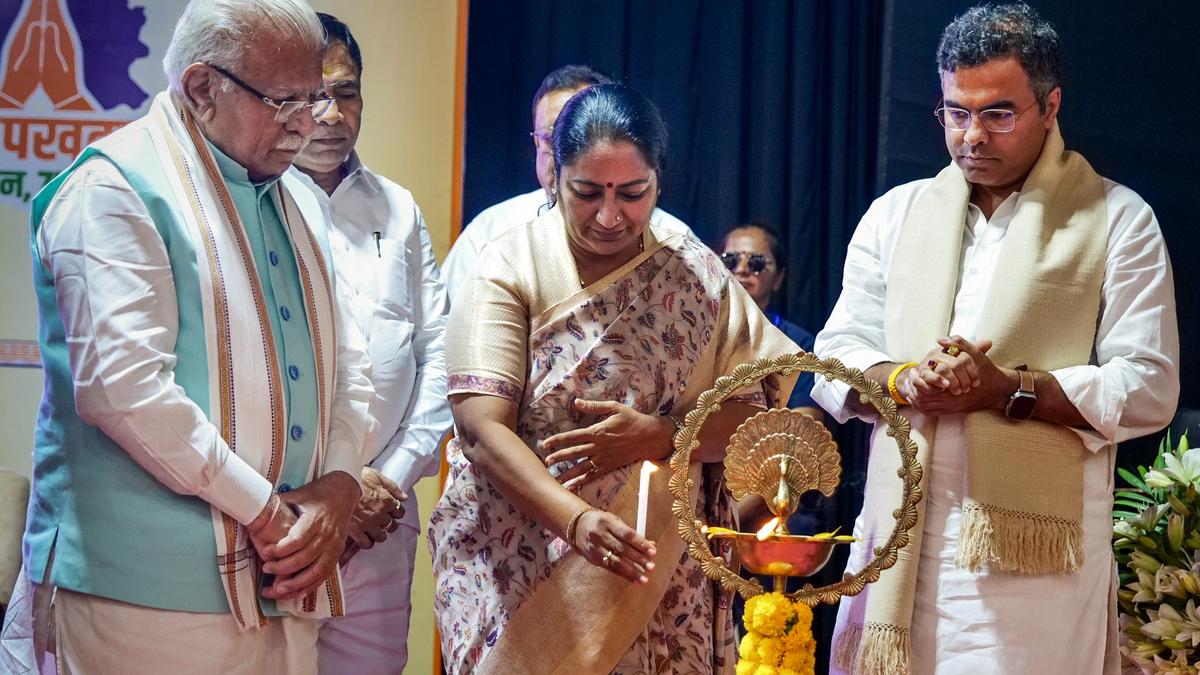
Union Minister Manohar Lal Khattar on Friday unveiled the drainage master plan for Delhi, designed to meet the capital’s requirements for the next 30 years and reduce waterlogging by 50 per cent in the next three years.
The Rs 57,362.85 crore plan also aims to reduce flood-related accidents by 30 per cent within five years.
“The city has been divided into three basins — Najafgarh, Barapullah and Trans-Yamuna — and consultants have been hired to redesign the drainage network,” according to a statement.
Implementation in two phases over five years
In five years, changes recommended in the plan will be implemented in two phases — critical flood control and network expansion with priority integration — across the city’s entire 18,958-kilometre drainage network, which currently involves eight different agencies.
“In the first two years, waterlogging hotspots under different agencies will be fixed, and from the third year, large-scale infrastructure work will be carried out in colonies that lack a drainage network. By 2029–30, the final year, testing and system handover will be completed,” the plan states.
To prepare the roadmap, the plan studied factors such as terrain slopes, surface depressions, and inadequate existing infrastructure.
Nature-based solutions to reduce flooding
It proposes diverting excess rainwater from stormwater drains to nearby lakes, wetlands or other water bodies using “nature-based solutions” (NBS), including Low Impact Development (LID) practices. This, the plan says, will reduce urban flooding while offering ecological benefits.
The Najafgarh Basin, which covers 918 square kilometres, will require around Rs 33,499 crore to fix the drainage problems. The Barapullah Basin, which carries approximately 80 per cent of the stormwater from the region and discharges it into the Yamuna River, has a total catchment area of 376.27 square kilometres. The cost of repair and expansion in this basin is Rs 14,547 crore.
Similarly, the Trans-Yamuna Basin, which falls on the eastern bank of the Yamuna River and spreads over North-East Delhi, Shahdara and East Delhi, covers an area of around 196.93 square kilometres. The cost for the repair of this basin is Rs 9,317 crore.
Khattar said the central government will assist the Delhi government in implementing the plan.
“Water-related matters are of paramount importance for our city’s well-being, encompassing drinking water, stormwater drainage and sewage systems. This comprehensive plan will offer a roadmap to free Delhi from waterlogging and related issues,” he said.
He also advised the Delhi government to work on reducing solid waste in major drains like Najafgarh and to enhance the Yamuna River’s carrying capacity.
Chief Minister Rekha Gupta said the Centre will help fund the project.
“We began our governance by inspecting nallahs and legacy waterlogging points. We don’t work from air-conditioned rooms. For the first time, areas like Minto Bridge and ITO did not face severe waterlogging this year,” she said.
Taking a swipe at previous governments, Gupta added, “They only gave lollipops. We hope the Centre releases at least the first instalment of funds soon.” The plan also estimates a 20 per cent improvement in water quality indicators — including chemical oxygen demand and total suspended solids — in Yamuna drainage outfalls within five years.
PWD Minister Parvesh Verma called the plan a “guarantee card” for a flood-free city.
“From now on, any drainage work done in Delhi will be based on this master plan. It is not just a plan on paper — it’s a guarantee that Delhi will remain resilient and flood-free for generations,” he said.
Criticising former chief minister Arvind Kejriwal, Verma alleged, “The previous government did no study. They were only busy building Sheeshmahals and filling their own homes.” Officials said once the detailed project report is approved, tenders will be invited from private firms to begin ground work.
The last comprehensive drainage plan for Delhi was prepared in 1976, when the city’s population was around 60 lakh. With the population now nearing 2 crore, the pressure on the drainage system has increased significantly.
Published on September 20, 2025



